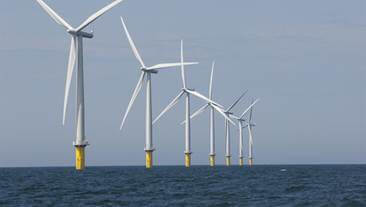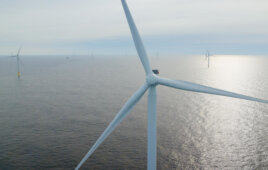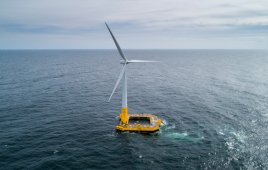The panel discussion here comes from the U.S. Offshore Wind 2016 conference sponsored by Wind Energy Update.
The trade press has been running stories lately that offshore wind is finally coming of age in the United States. Several big players are now moving into the sector. Four CEOs of offshore wind developers talked at Wind Energy Update’s Offshore Wind Market Development USA 2016 Conference in Boston in May about whether the renewed attention to the sector is justified.

The news reports that offshore wind is finally coming of age in the United States. What has made that possible?
The panelists and moderator are:
- Jim Gordon, CEO of Cape Wind,
- Chris Wissemann, CEO of Fishermen’s Energy,
- Alla Weinstein, CEO of Trident Winds, and
- Kirby Mercer, CEO of Beothuk Energy, a Canadian offshore wind developer.
- The moderator is Keith Martin with the Chadbourne office in Washington.
MARTIN: Jim Gordon, there are news reports that offshore wind is finally coming of age in the United States for real and, if so, what has changed recently?
GORDON: There is no question that there is a huge wind resource off of our shores. The question is whether we will put together the development expertise and capital to exploit it. We now have a regulatory framework in place for such projects. I am thrilled that there are more market entrants coming in here, because it validates what everybody is trying to do.The key will be to have contracted revenue streams that can attract the development capital to build these projects. Look at what the governors are doing in some northeastern states and around the country where they are finally starting to take climate change seriously. They are putting policies in place that will make very significant reductions in CO2 emissions. If the Clean Power Plan gets through the Supreme Court, then all the better. The right elements are coming into place. What kick started construction of new combined-cycle gas-fired power plants was power purchase agreements where investors knew they would get some kind of return if they put in capital. That is what we need to kick start the offshore wind market.MARTIN: You waged a lonely battle for 14 years. Now you have an army forming behind you. Chris Wissemann?
MR. WISSEMANN: One of the things that has scared regulators is the price of offshore wind. The electricity costs more than $200 per megawatt hour. That fear was reinforced to a great extent by the pricing coming out of Europe. What has happened in the last year or two is the price for electricity from offshore wind has dropped to €100 per megawatt hour in Europe. This gives us hope that we will be in a position soon to deliver electricity at similar prices in places like New York City, Long Island, downstate New York, Massachusetts and California. That is how offshore wind will finally start to get traction.
MARTIN: Did I hear you right that you expect to see bids in the U.S. that are close to $110 to $120 a megawatt hour?
MR. WISSEMANN: Not so much here because we are not in this bidding arena yet. But what you see in Europe is the most recent price for the Horns Rev 3 project is €110. The Dutch auction that is due tomorrow should set a new price hurdle somewhere in that range. You have all the vessels, ports and other infrastructure in place already in Europe to support offshore wind. The first projects in the U.S. do not stand a chance of coming near that price, but the fact that it is being done in Europe shows the kind of cost curve that is feasible with larger turbines.
MARTIN: So what is new is we starting to benefit from economies of scale. The regulatory regime is falling into place. The Clean Power Plan is providing some impetus. Has anything else has changed?
MS. WEINSTEIN: We now have US states requiring that utilities deliver 50% or more of electricity from renewable energy. That creates a market that was not there when Jim Gordon started work on Cape Wind.
MR. MERCER: We now have a regime in place in Canada to support offshore wind. In Canada, we have to deal only with the federal government. We don’t also have to worry about the politics at the provincial level. We also have a lot of the infrastructure in place already to support offshore wind. We have some world-class ports. We have good sites in shallow waters close to transmission lines. We don’t have the Jones Act to push up transport costs. It is all about design and getting the levelized cost of energy down to reasonable levels. All we have to do now is to get one big project going.
Read the rest here: https://goo.gl/IO8FIP
Filed Under: Offshore wind




